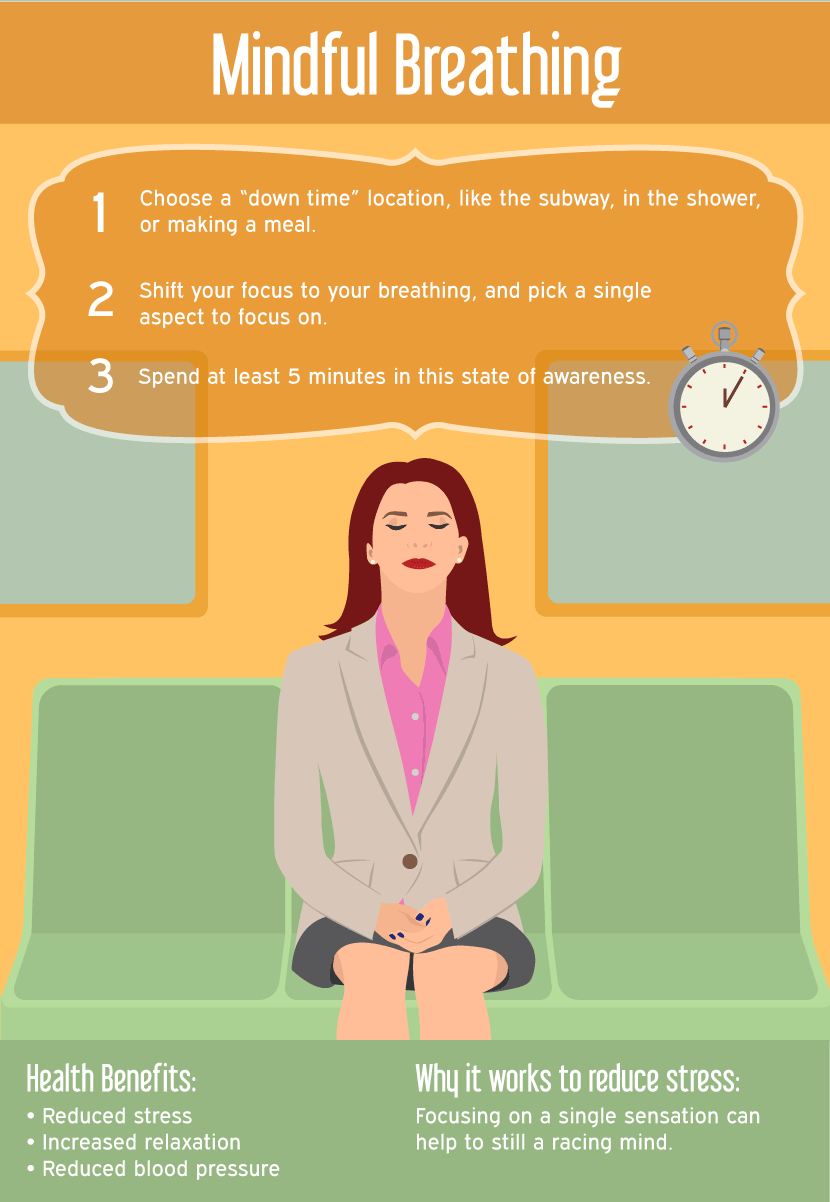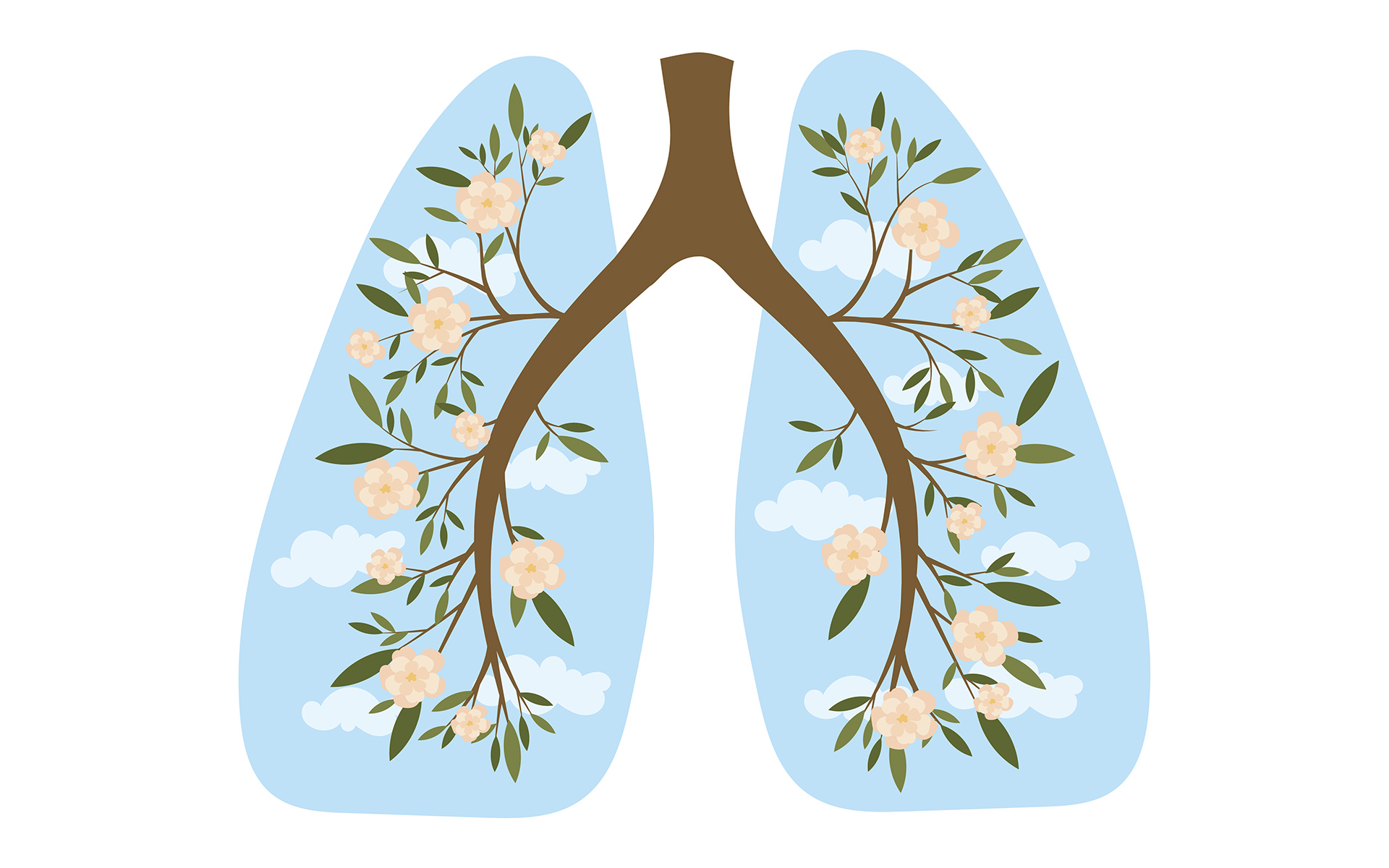Contents
- I. The Benefits of Mindful Breathing in Workouts
- II. Understanding Mindful Breathing Techniques
- III. Incorporating Mindful Breathing into Different Exercises
- IV. Exploring the Connection Between Mindful Breathing and Physical Performance
- V. Mindful Breathing for Stress Relief and Mental Well-being
- VI. Frequently Asked Questions about Mindful Breathing in Workouts
- 1. What is mindful breathing?
- 2. How does mindful breathing enhance workouts?
- 3. When should I practice mindful breathing during a workout?
- 4. Can I incorporate mindful breathing into any type of exercise?
- 5. Is there a specific technique for mindful breathing in workouts?
- 6. How long should I practice mindful breathing during my workouts?
I. The Benefits of Mindful Breathing in Workouts

Mindful breathing is a powerful technique that can greatly enhance your workouts. By incorporating intentional and focused breathing into your exercise routine, you can unlock a range of physical and mental benefits, taking your fitness journey to new heights.
1. Increased Oxygen Intake
When you practice mindful breathing during workouts, you allow for increased oxygen intake into your body. This ensures that your muscles receive an ample supply of oxygen-rich blood, enhancing their performance and endurance. The improved oxygenation also aids in reducing fatigue and promoting quicker recovery.
2. Enhanced Mind-Body Connection
Mindful breathing helps strengthen the mind-body connection by bringing awareness to each breath and movement. As you focus on inhaling deeply and exhaling fully during exercises, you become more attuned to the sensations within your body. This heightened awareness allows for better form, coordination, balance, and overall control during workouts.
3. Reduced Stress Levels
Incorporating mindfulness into your workouts through conscious breathing can significantly reduce stress levels. By focusing on the present moment rather than worrying about future tasks or past events, mindful breathing promotes relaxation and calms the mind. This decreased stress response not only enhances enjoyment during exercise but also supports overall well-being.
4. Improved Mental Clarity
Mindful breathing clears the mental clutter by directing attention solely towards the breath and movements involved in each exercise repetition or routine. This practice cultivates mental clarity as it allows you to let go of distracting thoughts or external pressures temporarily. With an unburdened mind, you can approach your workout with greater focus, intentionality, and efficiency.
5.Sustainable Energy Boost
The controlled and deliberate nature of mindful breathing helps regulate your energy levels throughout a workout. By consciously pacing your breath, you prevent rapid breathing or hyperventilation, which can lead to feelings of exhaustion. Instead, you harness sustained energy that carries you through the entire session, improving overall performance and preventing burnout.
By incorporating mindful breathing into your workouts, you unlock a multitude of benefits that extend beyond physical fitness. The intentional focus on breath cultivates a deeper mind-body connection, reduces stress levels, enhances mental clarity, and provides sustainable energy. Embrace the power of mindful breathing and transform your workouts into transformative experiences for both body and mind.
II. Understanding Mindful Breathing Techniques

Mindful breathing is a powerful technique that can help you achieve a deeper level of focus and relaxation during workouts. By incorporating mindful breathing into your exercise routine, you can enhance your mind-body connection and optimize the benefits of physical activity. In this section, we will explore some key techniques to help you understand and practice mindful breathing.
The 4-7-8 Technique
One popular mindful breathing technique is the 4-7-8 method. To begin, find a comfortable position and close your eyes if that feels right for you. Take a deep breath through your nose for four counts, hold it for seven counts, and then exhale slowly through pursed lips for eight counts. Repeat this cycle several times, allowing each breath to flow naturally while maintaining focus on the counting pattern.
Belly Breathing
Belly breathing is another effective technique that promotes relaxation and stress reduction. Start by placing one hand on your abdomen just below your ribcage and the other hand on your chest. Take a slow breath in through your nose, allowing your belly to rise as you fill up with air. As you exhale through pursed lips, feel the gentle contraction of your abdominal muscles as they relax back towards your spine.
Awareness of Sensations
Incorporating awareness of sensations during mindful breathing can deepen its impact on both body and mind. As you breathe in deeply, pay attention to how the air feels entering through your nostrils or mouth – its temperature, texture or any other sensations it may evoke within you. Similarly, observe how it feels when releasing each breath from within – notice any subtle changes in temperature or pressure as well as any calming sensations throughout.
Counting Breaths
Counting breaths is a simple yet effective technique to cultivate focus and concentration. As you inhale, mentally count “one,” and as you exhale, count “two.” Continue this pattern up to ten, then start over again at one. If your mind wanders or thoughts arise, gently bring your attention back to the counting without judgment or frustration.
Combining Mindful Breathing with Movement
You can further enhance the benefits of mindful breathing by integrating it with movement during workouts. For example, coordinate each inhalation and exhalation with specific movements like lifting weights, stretching or running. This synchronization allows you to fully immerse yourself in the present moment while engaging both body and mind.
By understanding and practicing these mindful breathing techniques, you can unlock a world of benefits within your workouts. From increased focus and relaxation to improved mind-body connection, incorporating mindful breathing into your exercise routine will undoubtedly elevate your fitness journey.
III. Incorporating Mindful Breathing into Different Exercises

Mindful breathing can be integrated into various exercises to enhance focus, relaxation, and overall well-being. Let’s explore how you can incorporate this practice into different workout routines:
1. Yoga and Pilates
Incorporating mindful breathing into your yoga or Pilates sessions can deepen your mind-body connection and promote a sense of calmness. As you move through each pose or exercise, pay attention to your breath. Inhale deeply through your nose, filling your lungs with air, and exhale slowly through your mouth.
2. Cardiovascular Workouts
During cardiovascular workouts such as running, cycling, or swimming, mindful breathing can help regulate your breath and increase endurance. Focus on maintaining a steady rhythm by inhaling for a certain number of steps or strokes and exhaling for the same count.
3. Strength Training
Mindful breathing during strength training exercises helps channel energy efficiently while reducing tension in the body. Breathe in deeply before lifting weights or performing any exertion; then exhale as you exert force during the movement.
4. High-Intensity Interval Training (HIIT)
Incorporating mindful breathing into HIIT workouts helps manage intensity levels while keeping you present in the moment despite the fast-paced nature of these exercises. Take deep breaths during rest intervals to recover effectively before engaging in intense bursts of activity.
5. Mindful Walking/Running
If you enjoy walking or running outdoors, practicing mindfulness while doing so enhances both physical and mental benefits of these activities. Pay attention to each step by syncing it with deep inhalations/exhalations; focus on the sensation of your feet connecting with the ground.
Remember, incorporating mindful breathing into any exercise routine requires practice and patience. Start by dedicating a few minutes at the beginning or end of your workouts to focus solely on your breath. With time, it will become a natural part of your fitness journey, enhancing both physical performance and mental well-being.
IV. Exploring the Connection Between Mindful Breathing and Physical Performance

Mindful breathing has gained significant attention in recent years, not only for its ability to reduce stress and promote emotional well-being but also for its potential impact on physical performance during workouts. This ancient practice involves paying close attention to our breath, taking slow and deliberate inhales and exhales while fully immersing ourselves in the present moment.
The Impact of Mindful Breathing on Oxygen Intake
One key aspect of mindful breathing is its ability to enhance oxygen intake. By consciously deepening our breaths, we can increase the amount of oxygen reaching our muscles and vital organs. This influx of oxygen helps improve energy levels, endurance, and overall physical performance during workouts.
Studies have shown that individuals who incorporate mindful breathing techniques into their exercise routines experience enhanced aerobic capacity. With increased oxygen availability, athletes can push their limits further, resulting in improved stamina and better athletic outcomes.
The Role of Mindful Breathing in Focus and Concentration
Another crucial aspect tied to physical performance is focus and concentration. Many athletes struggle with distractions during workouts or competitions that hinder their ability to perform at their best. However, practicing mindful breathing can help address this issue.
Mindfulness meditation techniques involving focused breath awareness have been found to improve concentration levels significantly. By training the mind to stay present through mindful breathing exercises, athletes can enhance their ability to block out distractions and maintain a laser-like focus on their training goals or competitive tasks at hand.
Mindful Breathing as a Stress-Reduction Tool
In addition to improving physical performance directly, mindful breathing also plays a crucial role in reducing stress levels—a factor that heavily impacts athletic abilities. Engaging in strenuous workouts often leads to heightened stress and anxiety, negatively affecting performance and recovery.
By incorporating mindful breathing into their routines, athletes can effectively manage stress levels. Deep breaths activate the body’s relaxation response, triggering a cascade of physiological changes that counteract the harmful effects of stress hormones like cortisol. This not only improves performance but also promotes quicker post-workout recovery.
The Connection Between Mindful Breathing and Mind-Body Awareness
Mindful breathing cultivates mind-body awareness, allowing individuals to develop a deeper understanding of their physical sensations, limitations, and strengths during exercise. This heightened sense of self-awareness enables athletes to make adjustments in real-time and optimize their movements for better form, posture, and overall efficiency.
Furthermore, by paying close attention to their breath while exercising or engaging in physical activities such as weightlifting or yoga poses, athletes can prevent injury risks associated with improper technique or overexertion. Mindful breathing acts as an internal guide that helps maintain optimal body alignment and prevents unnecessary strain on muscles or joints.
mindful breathing goes beyond its traditional applications as a relaxation technique—it has proven benefits for physical performance during workouts. By enhancing oxygen intake, improving focus and concentration levels,
reducing stress responses,
and fostering mind-body awareness,
this practice offers athletes a powerful tool to unlock their full potential in every training session or competition.
So why not give it a try?
V. Mindful Breathing for Stress Relief and Mental Well-being
In today’s fast-paced world, stress has become a common part of our lives. Whether it’s work pressures, personal relationships, or other external factors, stress can negatively impact our mental well-being. Thankfully, there are various techniques available to help manage and reduce stress levels. One such technique that has gained popularity is mindful breathing.
The Power of Mindful Breathing
Mindful breathing involves paying attention to your breath in a non-judgmental way. It allows you to anchor yourself in the present moment by focusing on the sensation of each breath entering and leaving your body. This simple practice can have profound effects on reducing stress and promoting mental well-being.
When we experience stress, our sympathetic nervous system activates the body’s fight-or-flight response. This response heightens our heart rate, increases blood pressure, and releases stress hormones like cortisol into the bloodstream. Mindful breathing helps activate the parasympathetic nervous system, which is responsible for relaxation and calming down the body.
How to Practice Mindful Breathing
To start practicing mindful breathing for stress relief and mental well-being:
- Find a quiet space: Choose a calm environment where you can sit comfortably without distractions.
- Get into a comfortable position: Sit with your back straight but relaxed; you may choose to close your eyes or leave them slightly open.
- Become aware of your breath: Notice how each inhale feels as air enters through your nostrils and fills up your lungs; observe how each exhale feels as air leaves your body.
- Acknowledge wandering thoughts: It’s normal for your mind to wander during practice; when you notice your thoughts drifting away, gently bring your focus back to the sensation of breathing.
- Practice regularly: Set aside a few minutes each day to engage in mindful breathing; consistency is key to reaping its benefits.
The Benefits of Mindful Breathing
Mindful breathing offers numerous benefits beyond stress relief and mental well-being. Some of these include:
- Improved focus and concentration: Regular practice can enhance your ability to concentrate on tasks at hand by training the mind to stay present.
- Better emotional regulation: Mindful breathing helps develop awareness of emotions, allowing you to respond rather than react impulsively in challenging situations.
- Increase self-awareness: By paying attention to the breath, you become more attuned with your body and its needs, fostering a deeper connection with yourself.
- Promote relaxation and better sleep: Engaging in mindful breathing before bed can calm the mind, helping you unwind and achieve a more restful sleep.
Incorporating mindful breathing into your daily routine can have profound effects on reducing stress levels and enhancing overall well-being. So take a moment for yourself each day, connect with your breath, and experience the transformative power of mindfulness.
VI. Frequently Asked Questions about Mindful Breathing in Workouts
Here are some common questions people have about mindful breathing in workouts:
1. What is mindful breathing?
Mindful breathing involves focusing your attention on your breath, observing it without judgment or trying to change it. It helps you become more present and aware of the sensations in your body.
2. How does mindful breathing enhance workouts?
Mindful breathing can enhance workouts by increasing focus, reducing stress and anxiety, improving endurance, and helping with recovery. It allows you to connect with your body and optimize performance.
3. When should I practice mindful breathing during a workout?
You can practice mindful breathing at any point during your workout. Some people find it helpful to start their workout with a few minutes of focused breathing to set the intention for the session.
4. Can I incorporate mindful breathing into any type of exercise?
Absolutely! Mindful breathing can be incorporated into any type of exercise, whether it’s yoga, running, weightlifting, or even walking. The key is to bring awareness to each breath as you move through the motions.
5. Is there a specific technique for mindful breathing in workouts?
No specific technique is required for mindful breathing in workouts. However, a popular approach is to breathe deeply into your diaphragm (belly) rather than shallow chest-breathing.
6. How long should I practice mindful breathing during my workouts?
The duration of practicing mindful brea

Shelby Cortez is a dynamic and passionate individual with a strong background in the fitness industry. With a Bachelor’s degree in Exercise Science from the prestigious University of California, she has gained extensive knowledge about the human body and its mechanics. Shelby’s dedication to fitness goes beyond her education, as she has spent years honing her skills as a personal trainer and group fitness instructor. Her expertise in workout routines and nutrition has helped countless individuals achieve their fitness goals. Shelby’s commitment to health and wellness is evident in her own lifestyle, as she consistently pushes herself to new limits in the gym. Whether it’s weightlifting, yoga, or HIIT workouts, Shelby Cortez is the go-to expert for all things fitness-related.
